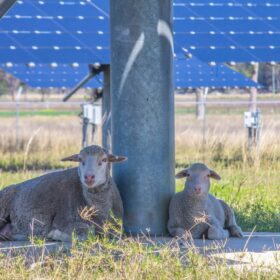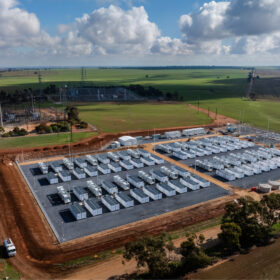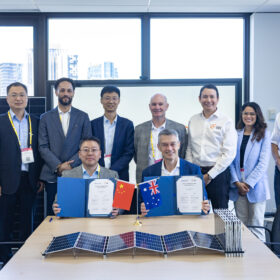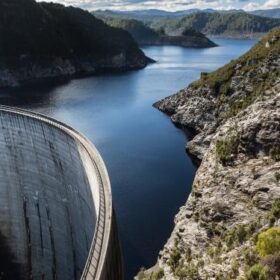The Australian Environmental Grantmakers Network (AEGN) report, The Economics of Giving: The Case for Climate Philanthropy, examines four major climate and energy initiatives supported by philanthropic funding and civil society leadership, including:
- Future Made in Australia, the Federal Government’s plan to drive economic growth by leveraging the net zero transition, with a focus on renewable energy and resilience.
- AGL’s transition to renewables after sustained shareholder and community pressure led the company to reduce emissions and commit to replacing coal with renewables by 2035.
- Queensland’s Energy and Jobs Plan to reach 50% renewables by 2030 while delivering a clean, reliable energy system and creating the jobs of the future.
- The campaign to save the national Renewable Energy Target (RET), which has underpinned decades of clean energy investment and was extended to 2030.
The report quantifies the economic and social value unlocked with the support of philanthropic investment, demonstrating the ‘outsized’ positive impact climate philanthropy has on our economy, society and environment – as well as the potential to catalyse action this decade.
Claire O’Rourke, CEO of the AEGN, says the findings are both a celebration of what has been achieved and an urgent call to ramp up philanthropic and civil society efforts to deliver better outcomes for the Australian economy, the environment and future generations.
“Philanthropy has been instrumental in driving climate action in Australia that will deliver economic and social benefits for decades to come, achieving outcomes essential to securing a thriving economy and a safe climate. However, the urgency of the crisis demands even greater ambition and action,” said O’Rourke.
“This landmark report reinforces the substantial impact that can be achieved from smart, targeted philanthropic investment and collaboration, with relatively modest funding able to deliver compelling benefits for taxpayers, communities, businesses and the broader economy. Climate philanthropy isn’t simply a partner in climate progress, it’s a smart investment in building a stronger, more resilient and prosperous Australian economy.”
The report shows how from elevating policy ambition and corporate leadership, to supporting clean industry growth and enabling advocacy and community mobilisation, philanthropy is critical to achieving breakthroughs that reduce emissions and climate impacts, deliver jobs and grow Australia’s economy.
It also highlights that long-term, flexible funding is especially powerful, providing organisations with the ability to sustain long-term efforts and the agility to act with impact at pivotal moments.
In the case of AGL’s transition to renewables, the report found philanthropy accounted for more than 70% of total funding for efforts that saw Australia’s biggest climate polluter transform into one of its biggest climate solutions.
“We wouldn’t have run the campaign without support from philanthropy,” said Glenn Walker, Head of the Nature Program at Greenpeace.
Meanwhile in the context of Future Made in Australia, the report highlights how philanthropy funded critical research, modelling and public campaigns that helped shape and advance the policy agenda and counter misinformation.
With less than 4% of Australian philanthropy directed toward environmental and climate change initiatives2, the report also highlights the potential for even greater impact. It provides eight key recommendations, urging funders to go further and faster by:
1. Giving boldly, urgently and with ambition
2. Funding core operations and multi-year work
3. Supporting flexible, adaptive funding
4. Enabling rapid-response or “surge” capacity
5. Trusting and backing the experience on the ground
6. Collaborating and sharing knowledge
7. Rethinking reporting – with a focus on impact and outcomes
8. Recruiting and inspiring others to give
O’Rourke says there is both an urgency and an unprecedented opportunity for philanthropy to shape Australia’s economic future, protect communities and accelerate climate progress.
“We are halfway through the critical decade for climate action. Philanthropy has the power to rise to this moment and further catalyse action across the public, private, and community sectors to secure a healthy environment and create a more sustainable and resilient future,” she said.
“Through smart investments in backing climate solutions, amplifying grassroots voices and countering disinformation, philanthropy can continue to help drive transformational climate and economic outcomes. However greater investment is needed to seize the opportunities ahead. Now is the time to act with even greater urgency and purpose to help deliver the future Australians deserve.”






By submitting this form you agree to pv magazine using your data for the purposes of publishing your comment.
Your personal data will only be disclosed or otherwise transmitted to third parties for the purposes of spam filtering or if this is necessary for technical maintenance of the website. Any other transfer to third parties will not take place unless this is justified on the basis of applicable data protection regulations or if pv magazine is legally obliged to do so.
You may revoke this consent at any time with effect for the future, in which case your personal data will be deleted immediately. Otherwise, your data will be deleted if pv magazine has processed your request or the purpose of data storage is fulfilled.
Further information on data privacy can be found in our Data Protection Policy.